Hyperkalemic periodic paralysis in horses is an autosomal dominant genetic disease affecting horses whose pedigree contains the American Quarter horses stallion impressive. The disease is a genetic disease that causes muscle paralysis, tremor, weakness, and in severe cases, death due to cardiac arrest or respiratory collapse. Horses with heavy muscle are affected mainly by HYPP.
Causes of Hyperkalemic Periodic Paralysis in Horses
Hyperkalemic periodic paralysis in horses is a genetic disease of certain breeds of horses that have a relation with American Quarter horses.
- Bloodline includes the American Quarter Horse stallion impressive.
- Heavily muscled physics.
- High potassium in the diet.
- The horse diet consists of alfalfa, orchard grass, brome hay, soyabean meal, canola oil, sugar, and beet molasses, sweet feeds and pelleted grains; or keep and light salts.
- Recent feeding.
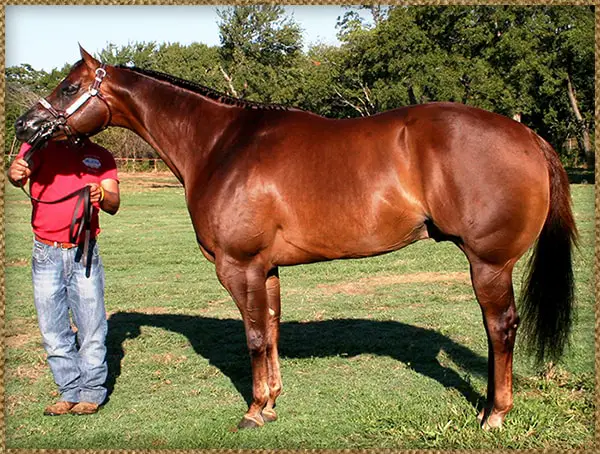
- Recent recovery from anesthesia.
- Recent sedation for an operation.
- Recent recovery from a sickness or injury.
- Changes in the weather, drop in temperature.
- Changes in feed and feeding schedule.
- Recent Trailering of a horse.
- Recent stress just after completion of work.
Pathogenesis of HYPP in Horses
The disease results from a genetic mutation within the skeletal muscle’s voltage-dependent sodium ion (Na+) channel alpha subunit. Within the muscles, the sodium channel serves as a portal through which sodium can enter the cell when the muscle is depolarized or activated. The intracellular sodium then enters the muscle fibers, triggering a further depolarization that releases calcium within muscle fibers resulting in concentration. The mutation results in a defect within the portal, specifically a failure within the sodium channel, causing a continual depolarization that does not allow the sodium channel to inactivate.
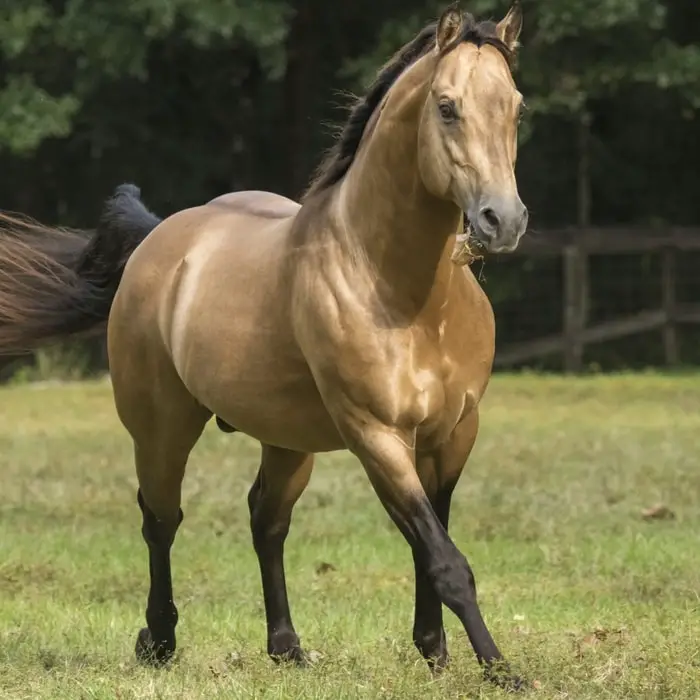
It also allows an increased flow of sodium into the cell and potassium out of the cell. This elevates the plasma potassium concentration to between 6-12 mEq/L and the intracellular sodium, which causes increased calcium release and a temporary uncontrolled increase in muscle contractions followed by a loss of muscle function. Symptoms slowly resolve as the extracellular potassium concentrations return to normal.
Clinical Signs of Hyperkalemic Periodic Paralysis in Horses
The severity of clinical signs varies between horses and, to some degree, depends upon whether one or both parents passed the genetic defect on. If both parents passed on the defect, the affected horse is born homozygous for the disease and tends to exhibit more severe signs.
- Increased facial muscle tone.
- Intermittent episodic yawing.
- Muscle tremor.
- Stiff gait.
- Flashing the third eyelid.
- Sweating.
- Weakness.
- Staggering.
- Swaying.
- Hind end collapse- dog sitting.
- Complete collapse of tight, rigid bound muscle.
- Respiratory stridor.
- Death.
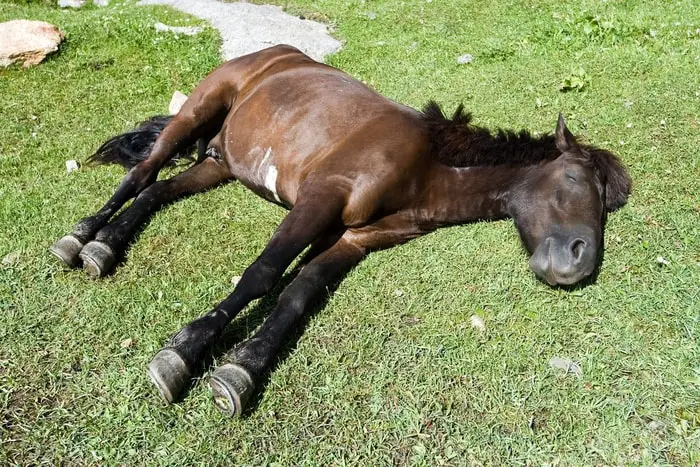
Diagnosis of HYPP in Horses
Hyperkalemic periodic paralysis in horses is a genetic disease and diagnosed by the following:
- Breeding history.
- Breeds of the horse, American Quarter horse.
- Heavy muscular horse.
- Sudden onset of muscular pain.
- Muscle Paralysis.
- Laboratory diagnosis of the gene.
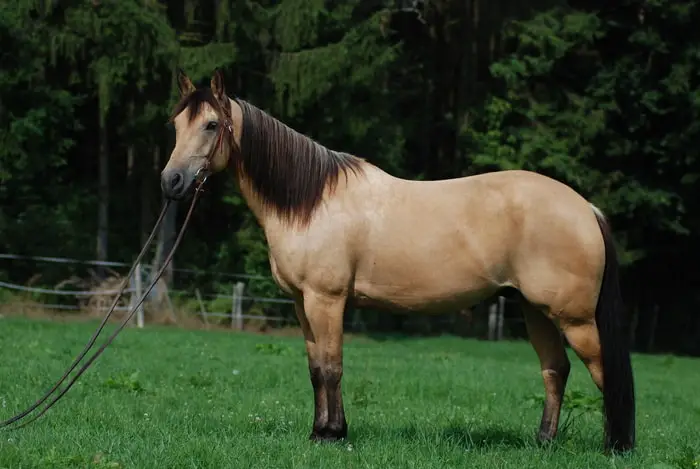
Treatment of Hyperkalemic Periodic Paralysis in Horses
Horses can manage to limit HYPP episode frequency and severity by controlling the concentration of plasma potassium.
- The amount of K ingested in the diet should be maintained between 0.6 to 1.1 percent by weight.
- Keep the diet balanced, especially in calcium, but remove all high potassium feeds and supplements.
- A forage analysis, measuring potassium concentrations, should be performed on the hay being fed.
- Avoid stress in the horse.
- Initiate mild, slow hand walking.
- Give oral table sugar paste, corn syrup, or Karo syrup.
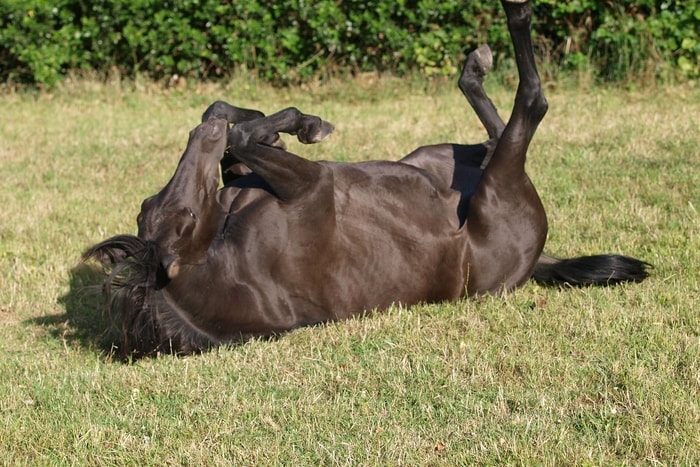
Prevention of HYPP in Horses
The following measures can prevent the disease:
- Follow good breeding practices- do not breed two carrier horses.
- Test all suspected horses with the stallion Impressive in their bloodlines.
- Place all positive horses on a low Potassium diet.
- Have forage analysis performed on all hay for low potassium levels.
- Feed Timoty or Bermuda grass, late-cut hay.
- Avoid legume and alfalfa-based hay and orchard or bromegrass.
- Feed oats or barley.
- Feed grain in small, frequent, and regular intervals.
- Avoid molasses. Sweet feed, pellets, canola oil, soya bean meal, and wheat bran.
- Avoid supplements including potassium- kelp, light salt.
- Maintain a regular exercise program and turnout schedule.
- Maintain a regular feeding schedule, 2-4 times a day.
- Maintain free access to salt and water.
- Maintain adequate calcium in the diet.
- Avoid sudden diet and environmental changes.
- Avoid excessive workloads.
- Place HYPP positive horses on episode-controlling diuretic medications.
Concluding Remarks on HYPP in Horses
While controlling HYpp can be difficult, depending upon the horse, it is possible. However, it is best to avoid the disease altogether. A DNA test is available at the University of California to identify and remove carriers from a breeding program. In addition, the American Quarter Horse Association is now recording a horse’s genetic status on its registration paper. A horse with the notation NN has a normal genome and does not carry the defect. It will be completely free of the disease. All horses with the sire Impressive in their bloodline should be tested negative for HYPP before purchase, heavy sedation, or anesthesia.